School History
Navy Elementary School opened in February 1956. Prior to February, Navy’s students were housed at the old Floris schools on West Ox Road.
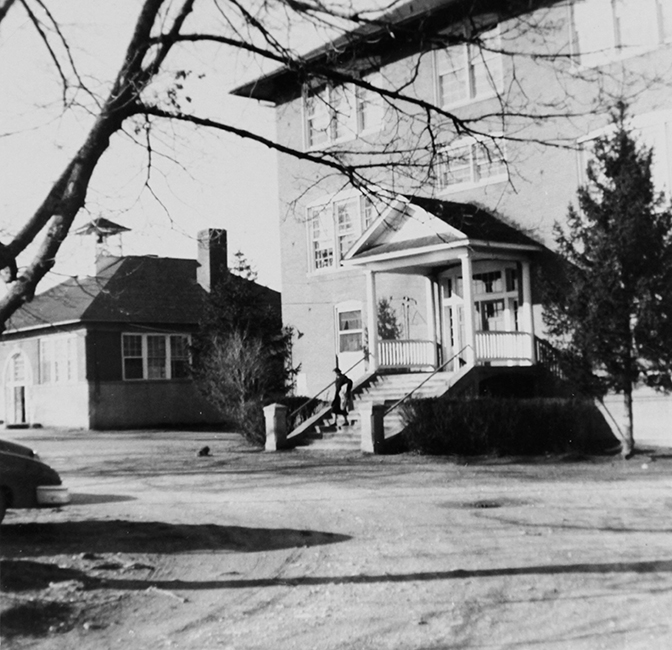
Navy Elementary School began construction in March 1955. Designed by the architecture firm of Ballou & Justice, our school originally had nine classrooms, a cafeteria, and a library.
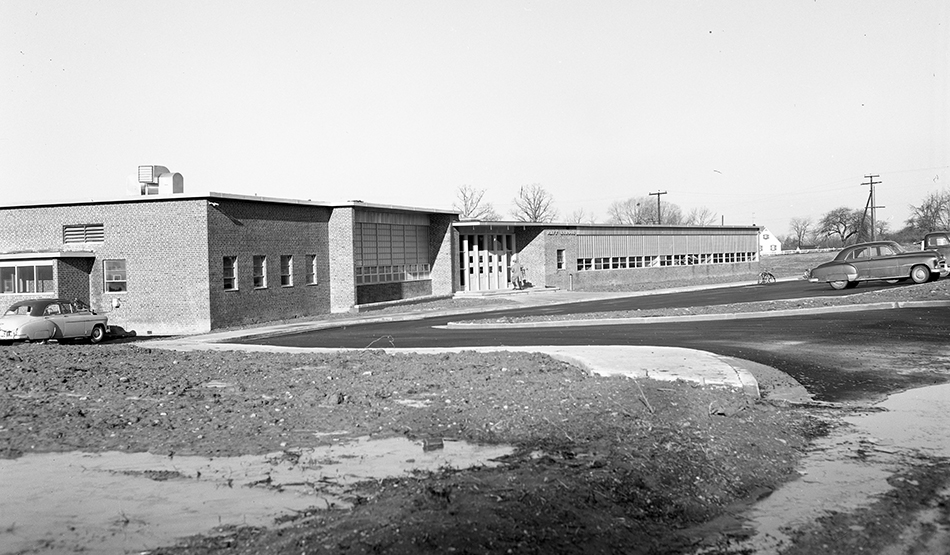
In 1956, when Navy Elementary School opened, the total student enrollment in Fairfax County Public Schools (FCPS) was approximately 33,600. Within ten years, that number would grow to more than 94,000. During that same time period, enrollment at Navy grew from 250 on opening day to 433 elementary students and 26 preschool Head Start pupils in 1966. Our first principal was Louise Rinker Harrison.
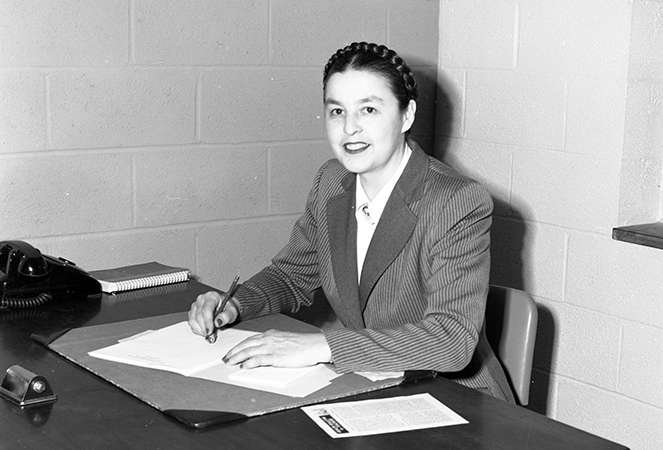
Navy Elementary School was dedicated on the snowy afternoon of March 18, 1956. In May of that year, Navy held its first annual Fun Festival and Bazaar to raise funds for playground equipment. Guest entertainers included Ray Haney of WRC-TV, the Fox Studio Dancers, the Morrow Theater Dancers, and Red Tannen. The festival also featured a band concert, a variety show, pony rides, and games. Television star Pick Temple, a cowboy folksinger, headlined the second annual festival in May 1957.
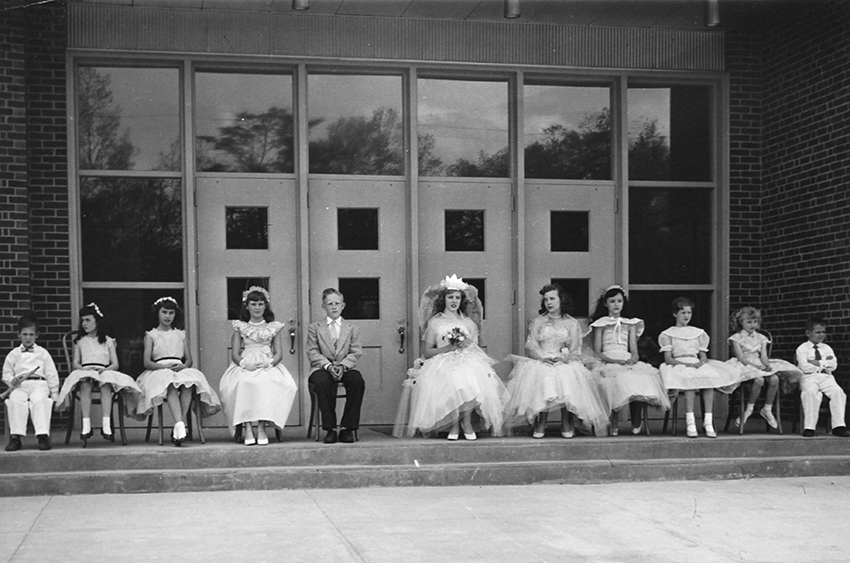
A Decade of Change
The decade of the 1960s brought several major changes to Navy Elementary School. In September 1960, FCPS opened its first intermediate schools. Prior to this time, elementary schools in Fairfax County educated children in grades one through seven.
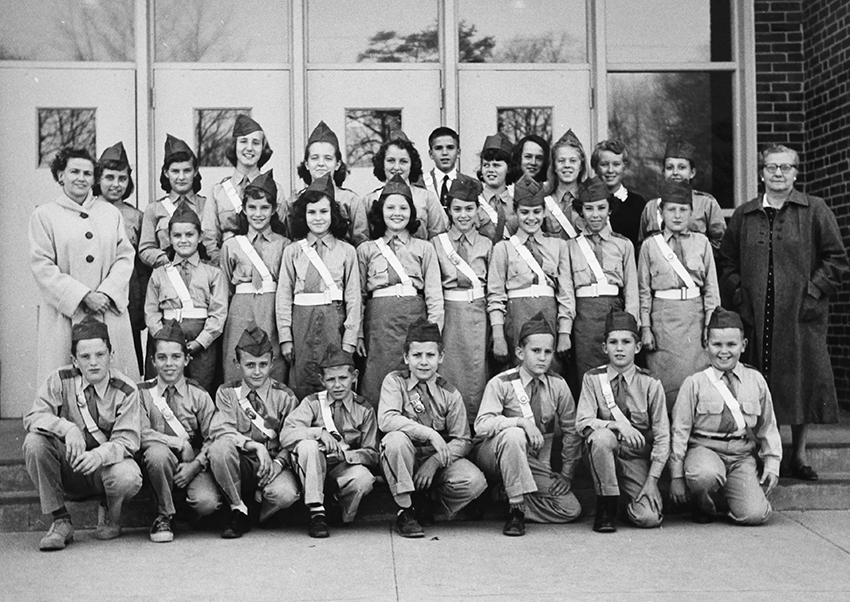
When Navy opened, public schools in Virginia were segregated by race. In the early 1960s, FCPS began a slow process of desegregation which culminated at the end of the 1965-66 school year. In June 1964, FCPS closed Oak Grove, an elementary school for African-American children in the Town of Herndon, and reassigned some of the children to Navy.
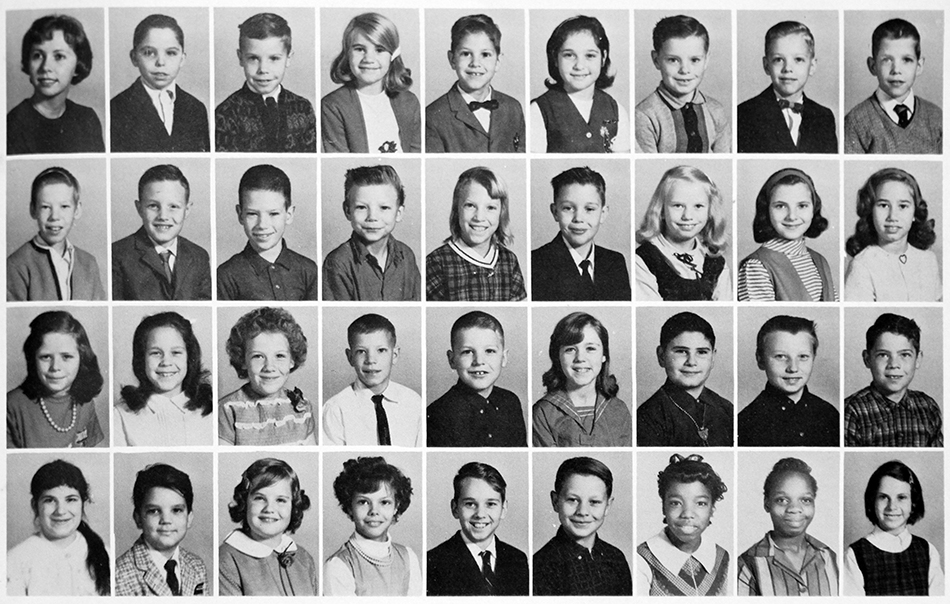
During the 1967-68 school year, a kindergarten program was piloted in several schools and proved so successful that one year later FCPS implemented kindergarten county-wide. Our school opened its doors to the five-year-olds of the neighborhood in September 1968. FCPS enrolled approximately 8,100 children in kindergarten during the 1968-69 school year.

Renovations and Additions
In November 1957, the architecture firm of Pickett & Siess of Falls Church was hired to prepare plans for an addition to Navy Elementary School. Our little nine-classroom building, less than two-years old, was already becoming overcrowded. The contract for a six-classroom addition was awarded in May 1958.
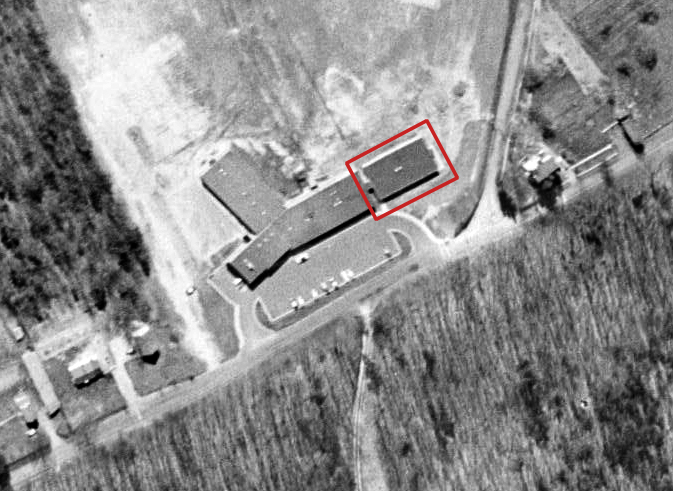
During the summer of 1964, $10,000 was spent in grading, landscaping, and adding a large blacktop for a play area. By January 1973, enrollment at Navy had swelled to 453 students. The pupil-capacity of Navy was limited to 450 students at this time because our school used a septic system due to its rural location far from any existing county sewer line. This limitation led to the readjustment of Navy Elementary School’s attendance boundary in 1977, when some students were transferred to Flint Hill Elementary School.
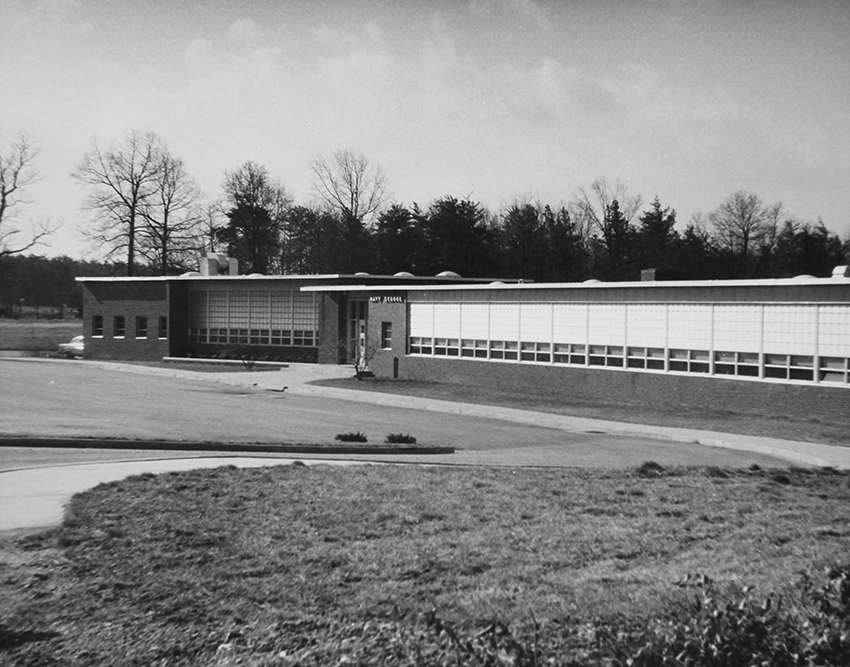
Navy’s first renovation occurred during the 1978-79 school year. A new library-media center, special education classrooms, the gymnasium, and a music classroom were added.

A third addition to Navy Elementary School was constructed in 1986. Built at a cost of $1.7 million, the addition included ten-classrooms, a new foyer, and an expanded cafeteria. An area of green space enclosed by the L-shaped classroom wing became our school’s courtyard. The bus loop and parking lot on Ox Trail were also built at this time, and Navy was connected to the county’s sewer system. A rededication ceremony was held in October 1986. Students sang, put on a talent show, and ate spaghetti with their parents in the cafeteria.

Air conditioning was installed in the 1950s-era sections of our building in 1990. By the turn of the century, rapid student population growth in western Fairfax County led to significant overcrowding at Navy. From 1999 to 2002, the number of portable classroom trailers in use at our school grew from seven to twelve. In June 2003, construction began on a fourth addition to Navy Elementary School.
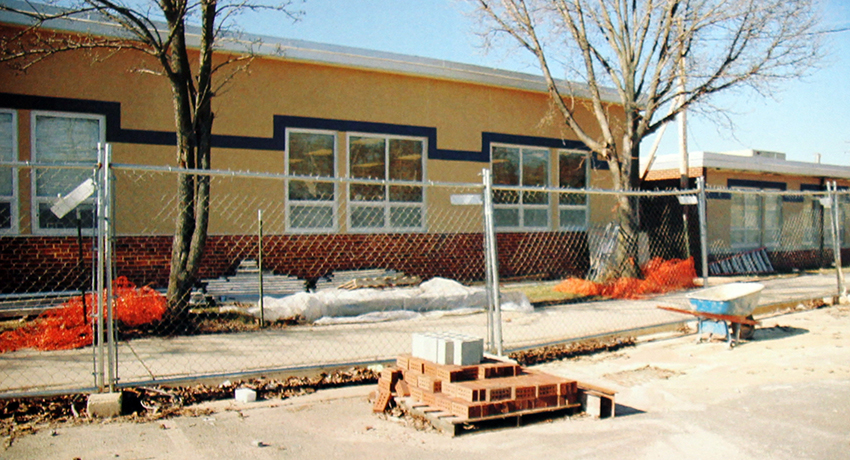
Explore the evolution of our school building, from 2002 to 2009, in this series of aerial photographs.
What’s in a Name?
Have you ever wondered how Navy Elementary School got its name? Find out in this video produced for the Fairfax County Public Schools cable television channel Red Apple 21.
The First Navy School
If you attended Navy Elementary School prior to May 2017, you might remember seeing a small white house that stood about 50 yards south of our school. That little house was originally a one-room schoolhouse called the Navy School.
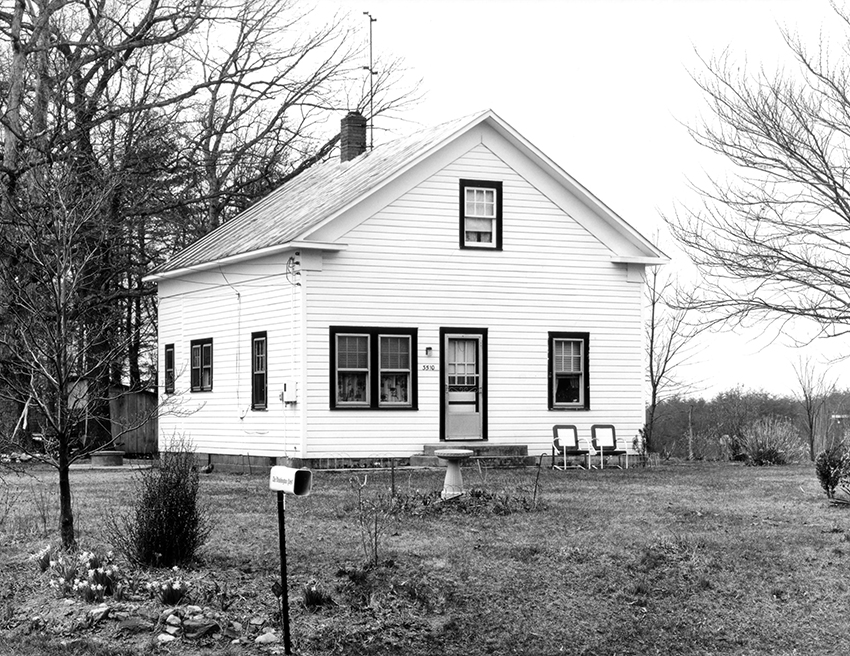
Navy Elementary School’s first principal, Louise Rinker Harrison, began her teaching career at that little schoolhouse in the 1920s, when she was just 18-years-old! Learn more about the fascinating history of the first Navy School.
Creative Play
If you attended Navy Elementary School in the mid-1980s or early 1990s, you probably have very fond memories of the school playground. Designed by architect Robert Leathers, Navy’s “Creative Play Area” was constructed in the spring of 1982 by parents, community members, and students. A multi-level wooden structure, the playground featured mazes, slides, bridges, tunnels, and a dragon carved by chainsaws out of a 3,000 pound tree trunk. Take a look:
Fun Fact
In past years, Navy School's symbols have been an anchor and Captain Ness (an acronym for Navy Elementary School Students). Students selected the dolphin as our school's mascot in 1985.

Then and Now
Navy Elementary School has experienced many changes since it opened in 1956, but some things remain the same, such as our commitment to academic excellence, community service, and strong home/school partnerships.
Elementary school experiences and memories last a lifetime. They give each of us the necessary skills to function as a member of a groups as well as an individual.
~ Dr. Barbara Fry, Principal, 1985-90
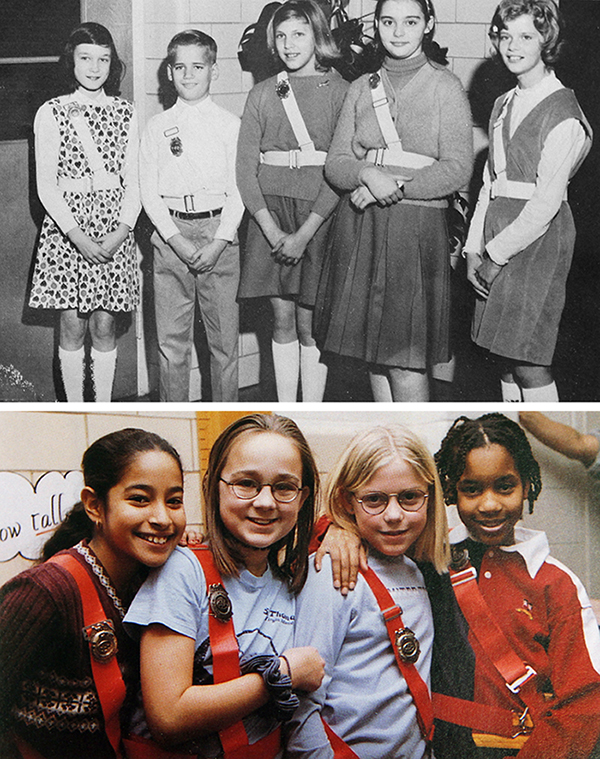
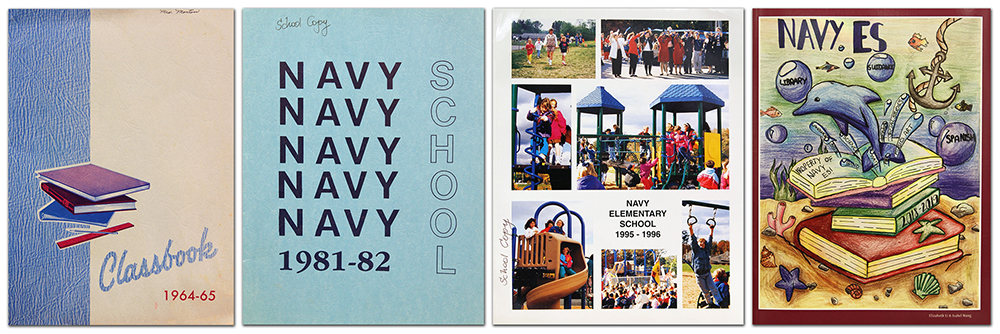
A Glimpse Back in Time
In 1992, Navy Elementary School was the subject of the Fairfax County Public Schools cable television channel series Profile. The Red Apple 21 crew spent several days at Navy, gathering interviews with teachers and classroom footage. The resulting 29-minute documentary provides a fascinating snapshot of Navy in the early 1990s.




